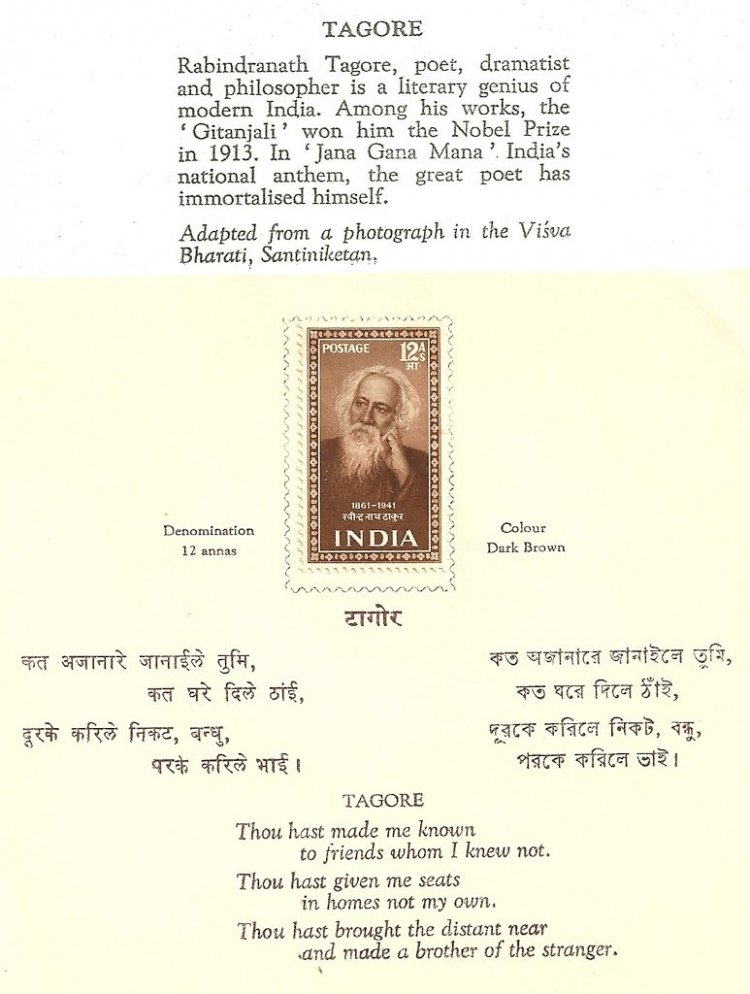History of National Anthem of India—The Meaning and Beauty of It

You know you would be lying if you have never felt a lump in your throat whenever our national anthem plays—school, movie theatre, games, plays, TV, radio—wherever it is. From the first day of school till today, we all remember our beautifully woven national anthem by heart and soul.
Have you ever wondered about the meaning, intention and history of our anthem? We know it’s a creation of our beloved Bengali poet and writer, Rabindra Nath Tagore, but do you know that it was originally composed in Bengali? Do you know the date on which it was written? Do you know that the music and lyrics of the same was also composed by Mr. Tagore? Most of you might know about this but still many of us do not have a clear idea about the same. Allow us to tell you about the importance of one of the most admired national anthems n the world—‘Jana Gana Mana’.

The History
The story behind its composition is that it was written by the Nobel Laureate as a song in Brahmo hymn. It was first sung at one of the sessions of the Indian National Congress on December 23, 1911, in Kolkata. The song connected so deeply with the people of India that after the independence, it was chosen to be our national anthem.
Originally written in Sanskritised Tatsama Bengali with five stanzas, the song was adopted as our anthem on January 24, 1950, by the Constituent Assembly of India, two days before the Constitution of India was enforced in an independent India.
The lyrics and music of the anthem was also composed by Tagore in 1911. It was, however, rendered into Hindi and Urdu by Abid Ali. The English composition of the song was created by Tagore, and is called ‘The Morning Song of India,’ The English version is available on the Internet for free.
The original version of the anthem take 52 seconds, however, the shorter version of the same takes about 20 seconds. An interesting fact about the anthem is that one of its renditions titled ‘Amar Sonar Bangla’ written by our very own Tagore is now the national anthem of Bangladesh. The complete version of the anthem is sung with an orchestral as well as choral adaptation; originally compose by Herbert Murrill on the suggestion of Pandit Nehru.
Meaning and Importance
When we sing ‘Jana Gana Mana,’ there is a sense of pride oozing out from our skin, eyes and soul. The essence of this song connects all Indians living across the globe—which is indeed its purpose—to bring unity in diversity amongst all of us. Apart from being a lyrical splendor, the song induces feelings of patriotism, love, respect and nationalism amongst the citizens. It reminds us about the great sacrifices of our freedom fighters, the richness of our culture, limitlessness of our geographical and social aesthetics, the diversity in our religions, traditions and people, the glory of our motherland; everything about our nation seems beautiful when we are in the moment, singing it.
The Controversy
Even though our national anthem is our pride, its greatness has been challenged from time to time in our nation. ‘Jana Gana Mana Adhinayal,’ is a loose translation of the ‘leader of people’s mind’ ( as per economist and author, Amartya Sen ), and it was alleged in the past that Tagore wrote the song originally for George V. Biswas during the time when he was crowned as the Emperor of India on December 15, 1911. However, other song titled ‘Baadshah Humara’ (written by Rambhuj Chaudhary) was sung during this event at the Delhi Durbar.

Tagore debated against the argument in a letter that he wrote in 1937, and clarified that the song was not written for Mr. Biswas. However, the controversy was raised again in 2015 by Kalyan Singh, then Governor of Rajasthan and Markandey Katju, former Judge of Supreme Court. There is still a lot of debate about the issue.
Nonetheless, the enriching history of our national anthem and the beauty of its meaning will always bound the Indians together as brothers and sisters no matter which part of the world they are living in.















































